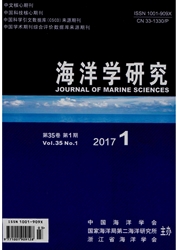

 中文摘要:
中文摘要:
本文主要针对南海北部大陆边缘发育的5个沉积盆地——台西南盆地、珠江口盆地、琼东南盆地、莺歌海盆地和中建南盆地,分析了近年来利用地球物理方法研究南海北部天然气渗漏系统的成果,重点包括3个方面:天然气水合物的储藏、流体运移通道以及海底表面渗漏特征。其中表征天然气水合物存在的似海底反射BSR在台西南和珠江口盆地发育明显,莺歌海盆地发现有大型气田;5个盆地流体运移活跃,其内发现了多样的运移通道:断层、底辟、气烟囱、多边形断层及水道(峡谷)等破裂结构;海底表面渗漏特征也在台西南、珠江口、莺歌海和中建南盆地均有发现。南海北部大陆边缘天然气渗漏系统广泛发育,值得进一步深入研究。
 英文摘要:
英文摘要:
Five sedimentary basins develop in the northern continental margin of the South China Sea:the Southwest Taiwan Basin,the Pearl River Mouth Basin,the Qiongdongnan Basin,the Yinggehai Basin and the Zhongjiannan Basin.We summarized the research of five basins'gas seepage systems with the use of geophysical methods,focusing on three aspects:natural gas hydrate reservoirs,fluid migration pathways and seeping features near the seabed.The results show that BSRs indicating the presence of natural gas hydrate are found in the Southwest Taiwan Basin,the Pearl River Mouth Basin,and there is a large gas field in the Yinggehai Basin;five basins have active fluid migration,where we can find a variety of pathways:faults,diapirs,gas chimneys,polygonal faults,channels(canyon)and other fracture structures;seeping features near the seabed have been found in the Southwest Taiwan Basin,the Pearl River Mouth Basin,the Yinggehai Basin and the Zhongjiannan Basin.The northern continental margin of the South China Sea with wide distribution of the gas seepage systems deserves further studies.
 同期刊论文项目
同期刊论文项目
 同项目期刊论文
同项目期刊论文
 期刊信息
期刊信息
